#view composer laravel
Explore tagged Tumblr posts
Text
Exploring Essential Laravel Development Tools for Building Powerful Web Applications
Laravel has emerged as one of the most popular PHP frameworks, providing builders a sturdy and green platform for building net packages. Central to the fulfillment of Laravel tasks are the development tools that streamline the improvement process, decorate productiveness, and make certain code quality. In this article, we will delve into the best Laravel development tools that each developer should be acquainted with.
1 Composer: Composer is a dependency manager for PHP that allows you to declare the libraries your project relies upon on and manages them for you. Laravel itself relies closely on Composer for package deal management, making it an essential device for Laravel builders. With Composer, you may without problems upload, eliminate, or update applications, making sure that your Laravel project stays up-to-date with the present day dependencies.
2 Artisan: Artisan is the command-line interface blanketed with Laravel, presenting various helpful instructions for scaffolding, handling migrations, producing controllers, models, and plenty extra. Laravel builders leverage Artisan to automate repetitive tasks and streamline improvement workflows, thereby growing efficiency and productiveness.
3 Laravel Debugbar: Debugging is an crucial component of software program development, and Laravel Debugbar simplifies the debugging procedure by using supplying exact insights into the application's overall performance, queries, views, and greater. It's a accessible device for identifying and resolving problems all through improvement, making sure the clean functioning of your Laravel application.
4 Laravel Telescope: Similar to Laravel Debugbar, Laravel Telescope is a debugging assistant for Laravel programs, presenting actual-time insights into requests, exceptions, database queries, and greater. With its intuitive dashboard, developers can monitor the software's behavior, pick out performance bottlenecks, and optimize hence.
5 Laravel Mix: Laravel Mix offers a fluent API for outlining webpack build steps on your Laravel application. It simplifies asset compilation and preprocessing duties together with compiling SASS or LESS documents, concatenating and minifying JavaScript documents, and dealing with versioning. Laravel Mix significantly streamlines the frontend improvement procedure, permitting builders to attention on building notable consumer reviews.
6 Laravel Horizon: Laravel Horizon is a dashboard and configuration system for Laravel's Redis queue, imparting insights into process throughput, runtime metrics, and more. It enables builders to monitor and control queued jobs efficiently, ensuring most beneficial performance and scalability for Laravel programs that leverage history processing.
7 Laravel Envoyer: Laravel Envoyer is a deployment tool designed specifically for Laravel packages, facilitating seamless deployment workflows with 0 downtime. It automates the deployment process, from pushing code adjustments to more than one servers to executing deployment scripts, thereby minimizing the chance of errors and ensuring smooth deployments.
8 Laravel Dusk: Laravel Dusk is an cease-to-give up browser testing tool for Laravel applications, built on pinnacle of the ChromeDriver and WebDriverIO. It lets in builders to put in writing expressive and dependable browser assessments, making sure that critical user interactions and workflows function as expected across exceptional browsers and environments.
9 Laravel Valet: Laravel Valet gives a light-weight improvement surroundings for Laravel applications on macOS, offering seamless integration with equipment like MySQL, NGINX, and PHP. It simplifies the setup process, permitting developers to consciousness on writing code instead of configuring their development environment.
In end, mastering the vital Laravel development tools noted above is important for building robust, green, and scalable internet packages with Laravel. Whether it's handling dependencies, debugging troubles, optimizing overall performance, or streamlining deployment workflows, those equipment empower Laravel developers to supply outstanding answers that meet the demands of current internet development. Embracing these gear will certainly increase your Laravel improvement enjoy and accelerate your journey toward turning into a talented Laravel developer.
3 notes
·
View notes
Text
PHP Development: A Timeless Technology Powering the Web in 2025
PHP development remains one of the most trusted and widely used approaches for building dynamic websites and web applications. Despite the rise of new programming languages and frameworks, PHP continues to evolve and maintain its stronghold in the web development ecosystem. In fact, popular platforms like WordPress, Facebook, and Wikipedia still rely on PHP as a key part of their technology stack. In this blog, we’ll explore what PHP development is, its advantages, common use cases, modern tools, and why it continues to be a smart choice in 2025. What is PHP Development? PHP (Hypertext Preprocessor) is a server-side scripting language specifically designed for web development. PHP development refers to the process of using PHP to create interactive and dynamic web pages, manage backend functionality, and build full-stack applications. From simple landing pages to complex enterprise systems, PHP allows developers to create secure, scalable, and performance-driven websites efficiently. Why Choose PHP for Web Development? Even in 2025, PHP offers several compelling reasons to be your go-to web development language: 1. Open-Source and Cost-Effective PHP is free to use, reducing development costs for individuals and businesses alike. With a wide range of open-source tools and libraries, developers can build robust applications without high overhead. 2. Cross-Platform Compatibility PHP runs on all major operating systems, including Windows, Linux, and macOS. It's compatible with nearly all servers and easily integrates with MySQL, PostgreSQL, and other popular databases. 3. Massive Community Support One of PHP’s greatest strengths is its global community. Thousands of developers contribute to its ecosystem, creating libraries, plugins, and frameworks that enhance productivity and solve real-world challenges. 4. Frameworks That Speed Up Development Modern PHP frameworks like Laravel, Symfony, and CodeIgniter simplify development with built-in tools, reusable components, and architectural patterns like MVC (Model-View-Controller). 5. High Performance with PHP 8+ The release of PHP 8 and above has brought significant performance improvements, thanks to features like JIT (Just-In-Time) compilation. PHP applications now load faster and use fewer server resources. Popular Use Cases of PHP Development PHP is highly versatile and used in a variety of web development scenarios: Content Management Systems (CMS): WordPress, Joomla, Drupal eCommerce Platforms: Magento, WooCommerce, OpenCart Custom Web Applications: CRMs, ERPs, dashboards API Development: RESTful APIs for mobile and web apps Social Networks & Forums: Community platforms, blogs, discussion boards Essential Tools for PHP Developers To build and manage PHP applications efficiently, developers often use the following tools: Laravel – A modern PHP framework for clean, elegant code. Composer – Dependency manager for PHP. PHPStorm – Feature-rich IDE tailored for PHP. XAMPP/WAMP – Local development environments. Postman – Testing APIs built with PHP. PHP Development Best Practices To get the most out of PHP development, follow these proven practices: Use a framework to structure your application. Sanitize and validate all user inputs to prevent security threats. Write modular, reusable code using object-oriented programming. Leverage Composer for package management.
0 notes
Text
Belajar Laravel
Minggu 1: Pengenalan Dasar Laravel Apa itu Laravel? Keunggulan dan fitur utamanya. Instalasi Laravel (Composer, PHP, server lokal seperti XAMPP/Laragon). Struktur folder dan file dalam proyek Laravel. Konsep routing dasar: Route::get, Route::post, dan parameter. Pengenalan ke Artisan Command (php artisan). Pengenalan MVC (Model-View-Controller) di Laravel. Membuat controller sederhana…
0 notes
Text
Getting Started with Laravel: A Beginner’s Guide to Building Dynamic Websites
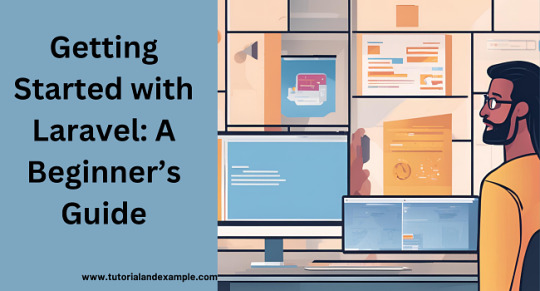
If you’re new to web development, Laravel is one of the best frameworks. It’s a PHP-based framework designed to make building modern web applications simple and efficient. In this Laravel Tutorial for Beginners, we’ll explore the basics of this powerful tool and how you can get started.
Laravel stands out because of its clean syntax and developer-friendly features. It comes with pre-built tools like routing, authentication, and database management, which save time and effort. Whether you’re building a small website or a large application, Laravel provides the flexibility to handle it all.
To begin, you’ll need to install Laravel. It requires PHP and Composer, as well as a dependency manager. Once installed, you can create a new Laravel project with a single command. Laravel’s structure is intuitive, making it easier for beginners to navigate through files and understand how things work.
One of the first things you’ll learn in Laravel is routing. This feature helps connect user requests to specific actions or pages in your application. Next, you’ll explore Blade, Laravel’s powerful templating engine, which allows you to create dynamic views with ease. Database management is also straightforward with Laravel’s Eloquent ORM, making it easy to interact with your database.
By learning Laravel, you’ll gain the skills to build modern, scalable web applications. Start exploring this fantastic framework and unlock your potential as a web developer.
For a detailed guide, visit Laravel Tutorial.
0 notes
Text
Build Portfolio Website in Laravel 11: Your Comprehensive Guide
Building a portfolio website is an essential step for showcasing your skills, projects, and achievements in today's competitive world. Laravel 11, the latest version of the robust PHP framework, offers unparalleled tools and features to create a stunning and functional portfolio website. In this guide, we’ll walk you through the process of building a portfolio website in Laravel 11, ensuring you have a step-by-step roadmap to success.
Why Choose Laravel 11 for Your Portfolio Website?
1. Modern Features
Laravel 11 introduces enhanced routing, improved performance, and advanced tooling that make it the go-to choice for web development.
2. Scalability
Whether you're a freelancer or a business owner, Laravel 11's scalability ensures your website can grow as your portfolio expands.
3. Security
With built-in authentication and security features, Laravel 11 protects your data and provides peace of mind.
4. Community Support
Laravel’s vast community ensures you’ll find solutions to problems, tutorials, and plugins to enhance your website.
Key Features of a Portfolio Website
To build a portfolio website in Laravel 11, ensure it includes:
Homepage: A welcoming introduction.
About Section: Your background and expertise.
Projects: A gallery showcasing your work.
Contact Form: Easy communication.
Blog Section: Share insights and updates.
Responsive Design: Optimized for all devices.
Getting Started with Laravel 11
Step 1: Install Laravel 11
Start by setting up Laravel 11 on your local environment.
composer create-project --prefer-dist laravel/laravel portfolio-website
Step 2: Configure Your Environment
Update your .env file to set up the database and other environment variables.
DB_CONNECTION=mysql
DB_HOST=127.0.0.1
DB_PORT=3306
DB_DATABASE=portfolio
DB_USERNAME=root
DB_PASSWORD=yourpassword
Step 3: Set Up Authentication
Laravel 11 offers seamless authentication features.
php artisan make:auth
This command generates routes, controllers, and views for user authentication.
Step 4: Design Your Database
Create tables for your portfolio items, such as projects, blogs, and user profiles. Use migrations to structure your database.
php artisan make:migration create_projects_table
In the migration file:
Schema::create('projects', function (Blueprint $table) {
$table->id();
$table->string('title');
$table->text('description');
$table->string('image')->nullable();
$table->timestamps();
});
Run the migration:
php artisan migrate
Building the Frontend
Step 1: Choose a CSS Framework
Laravel integrates well with frameworks like Tailwind CSS and Bootstrap. Install Tailwind CSS for modern and responsive designs:
npm install -D tailwindcss
npx tailwindcss init
Configure your Tailwind file and integrate it into your project.
Step 2: Create Blade Templates
Laravel’s Blade templating engine simplifies building dynamic pages. Create a layout file in resources/views/layouts/app.blade.php:
<!DOCTYPE html>
<html>
<head>
<title>@yield('title')</title>
<link rel="stylesheet" href="{{ asset('css/app.css') }}">
</head>
<body>
<div class="container">
@yield('content')
</div>
</body>
</html>
Use this layout in other views:
@extends('layouts.app')
@section('title', 'Home')
@section('content')
<h1>Welcome to My Portfolio</h1>
@endsection
Step 3: Dynamic Content
Fetch portfolio items from the database and display them dynamically using controllers.
public function index() {
$projects = Project::all();
return view('home', compact('projects'));
}
In your Blade template:
@foreach ($projects as $project)
<div class="project">
<h2>{{ $project->title }}</h2>
<p>{{ $project->description }}</p>
<img src="{{ $project->image }}" alt="{{ $project->title }}">
</div>
@endforeach
Advanced Features
1. Search Functionality
Add search to help visitors find specific projects or blogs.
public function search(Request $request) {
$query = $request->input('query');
$projects = Project::where('title', 'LIKE', "%{$query}%")->get();
return view('search-results', compact('projects'));
}
2. File Uploads
Enable uploading images for projects.
public function store(Request $request) {
$request->validate([
'title' => 'required',
'description' => 'required',
'image' => 'nullable|image',
]);
$imagePath = $request->file('image')->store('projects', 'public');
Project::create([
'title' => $request->title,
'description' => $request->description,
'image' => $imagePath,
]);
}
3. Integrate Analytics
Use Google Analytics or similar tools to track visitor behavior.
4. Deploying Your Website
Deploy your Laravel website using platforms like Laravel Forge, AWS, or Heroku. Ensure to optimize the performance with caching and minification.
Optimizing Your Portfolio Website for SEO
Keyword Integration: Use keywords like “Build Portfolio Website in Laravel 11” strategically in titles, meta descriptions, and content.
Fast Loading Times: Optimize images and use caching.
Responsive Design: Ensure compatibility with mobile devices.
Content Strategy: Regularly update your blog to attract organic traffic.
Conclusion
Building a portfolio website in Laravel 11 is an enriching experience that showcases your skills and work to the world. By leveraging the framework’s capabilities and integrating advanced features, you can create a website that stands out in the digital landscape. Start your journey today and make your mark with a professional portfolio website
0 notes
Text

How to Create a Website Using a Programming Language Like Laravel with a Pre-Built Theme on VS Code - Sohojware
Creating a website using Laravel, a powerful PHP framework, can be an excellent choice for developers seeking flexibility and efficiency. When combined with a pre-built theme, the process becomes even more streamlined, allowing you to focus on customization and functionality rather than starting from scratch. In this article, we’ll guide you through setting up a website using Laravel, leveraging a pre-built theme, and coding with Visual Studio Code (VS Code). Whether you are a seasoned developer or just starting, this guide from Sohojware will help you create a stunning website.
Why Choose Laravel for Your Website?
Laravel stands out as one of the most popular PHP frameworks due to its elegant syntax, robust features, and ease of use. It provides a clean and straightforward way to build web applications, making it a favorite among developers. Here’s why Laravel is an excellent choice:
Eloquent ORM: Laravel’s Eloquent ORM allows for seamless database interaction using an object-oriented approach.
Blade Templating Engine: Laravel’s Blade template engine makes it easy to create dynamic content and layouts.
Artisan CLI: Laravel’s command-line tool, Artisan, simplifies repetitive tasks and enhances productivity.
Security: Laravel offers built-in security features to protect your website from common vulnerabilities.
Scalability: Laravel is designed to handle large-scale applications, ensuring that your website can grow with your business.
Getting Started with Laravel and VS Code
Step 1: Install Laravel
To begin, you need to have PHP and Composer installed on your machine. Composer is a dependency manager for PHP, essential for installing Laravel and its components.
Install Composer: Download Composer from getcomposer.org and follow the installation instructions for your operating system.
Install Laravel: Open your terminal and run the following command to install Laravel globally:
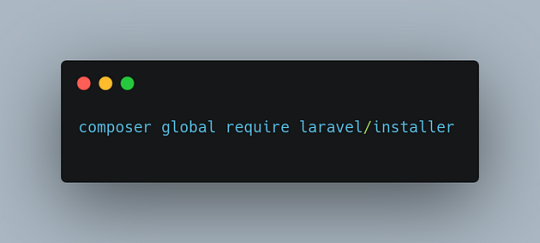
Step 2: Create a New Laravel Project


Step 3: Set Up Your Development Environment
Open VS Code: Launch Visual Studio Code, and open your newly created Laravel project directory.
Configure Your Environment: Edit the .env file in your project root to configure your database and other environment settings. For instance:
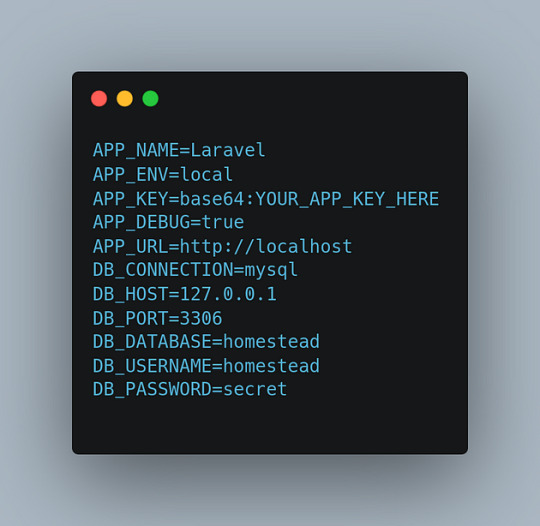
Step 4: Install and Configure a Pre-Built Theme
Select a Pre-Built Theme: Choose a pre-built theme that suits your website’s needs. Websites like ThemeForest or Creative Market offer a range of Laravel-compatible themes.
Integrate the Theme with Laravel:
Step 5: Customize Your Theme
Edit Blade Templates: Use VS Code to modify the Blade templates according to your needs. Blade templates are located in the resources/views directory. For example, you might customize the layouts/app.blade.php file to include your theme’s layout.
Adjust Styles and Scripts: Ensure that the theme’s CSS and JavaScript files are included in your Blade templates. You may need to adjust paths to ensure that assets are correctly loaded.
Step 6: Develop Your Website
Create Models and Controllers: Use Laravel’s Artisan CLI to generate models and controllers. For instance:
The -m flag generates a migration file for the model.
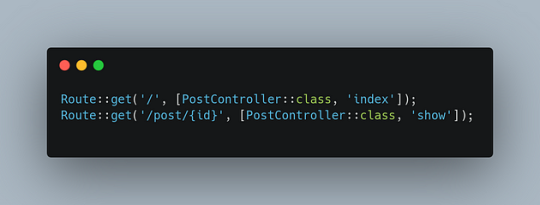

Step 7: Test and Launch Your Website
Run the Development Server: Start Laravel’s built-in server:
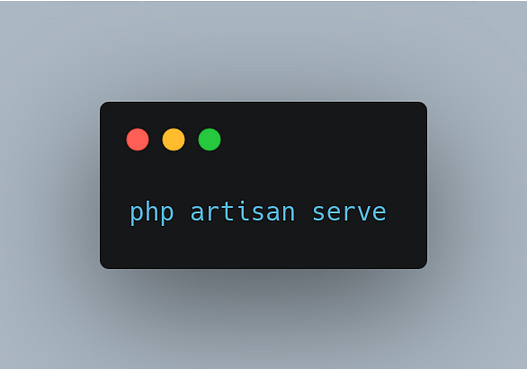
Visit http://localhost:8000 to preview your website.
Debug and Fix Issues: Use Laravel’s debugging tools to identify and fix any issues.
Deploy Your Website: Once your website is ready, deploy it to a production server. Update your .env file for production settings and use a hosting provider like DigitalOcean or Laravel Forge to deploy your site.
FAQs About Using Laravel with Sohojware
1. What is Sohojware, and how can they assist with my Laravel project?
Sohojware is a company specializing in web development and technology solutions. They offer services for creating and optimizing Laravel-based websites, including custom theme integration and performance enhancements. For more information, visit Sohojware.
2. Can Sohojware help me with Laravel theme customization?
Yes, Sohojware can assist with customizing Laravel themes to match your specific requirements. Their team of experts will ensure that your website’s design aligns with your brand and functionality needs.
3. How do I get started with Laravel development at Sohojware?
To start a Laravel project with Sohojware, contact their team through their website. They offer consultations and development services tailored to your project needs. Visit Sohojware for more details.
4. Does Sohojware offer support for Laravel deployment?
Absolutely. Sohojware provides comprehensive support for deploying Laravel applications. Their services include server setup, environment configuration, and ongoing maintenance. Learn more by visiting Sohojware.
5. What resources does Sohojware provide for learning Laravel?
Sohojware offers various resources and tutorials for learning Laravel. Their website features blog posts, guides, and case studies to help you understand Laravel better and apply best practices in your projects.
By following these steps and leveraging the expertise of Sohojware, you can create a professional and functional website using Laravel and a pre-built theme. Whether you are building a personal blog, an e-commerce site, or a corporate portal, Laravel’s powerful features combined with a pre-built theme can help you achieve your goals efficiently. For more information and support, visit Sohojware today.
1 note
·
View note
Text
How to Optimize Laravel Applications for Performance

Laravel is one of the most popular PHP frameworks, known for its elegant syntax and robust features. However, like any web application, Laravel projects can experience performance bottlenecks if not optimized properly. As a Laravel developer, understanding how to optimize your application is crucial to delivering fast, reliable, and scalable solutions. Here are some essential strategies to enhance the performance of your Laravel applications.
1. Optimize Database Queries
Efficient database interaction is vital for application performance. As a Laravel developer, you can optimize your queries by:
Eager Loading: Use Eager Loading to prevent the N+1 query problem by loading all necessary related models with a single query.
Query Caching: Implement query caching for frequently accessed data to reduce the load on your database.
Indexes: Ensure that your database tables are properly indexed. Indexes can drastically speed up query performance, especially on large datasets.
2. Leverage Laravel’s Built-in Caching
Laravel provides a powerful caching system that can significantly reduce the time taken to retrieve frequently accessed data. As a Laravel developer, you should:
Route Caching: Cache your routes for faster route resolution, particularly in large applications.
View Caching: Cache compiled views to avoid recompiling Blade templates every time they are accessed.
Application Caching: Use Laravel’s application cache to store expensive computations or database queries.
3. Optimize Autoloading
Autoloading is convenient but can slow down your application if not managed properly. Here’s how you can optimize autoloading:
Classmap Optimization: Use composer dump-autoload -o to optimize the autoloader by creating a static map of all classes in your application.
Remove Unused Service Providers: Only load the service providers that your application needs. Disable or remove unnecessary ones to reduce overhead.
4. Use Queues for Time-Consuming Tasks
As a Laravel developer, offloading time-consuming tasks to background jobs is a smart way to keep your application responsive. Tasks like sending emails, processing file uploads, or generating reports can be handled asynchronously using Laravel Queues. This not only improves the user experience but also reduces the load on your server.
5. Optimize Middleware and Configurations
Middleware is a powerful feature in Laravel but can introduce latency if not used correctly. Optimize middleware by:
Prioritizing and Grouping Middleware: Group middleware that is frequently used together to reduce the overhead of loading them individually.
Minimize Middleware Usage: Only apply middleware where it is absolutely necessary.
Additionally, ensure that your configurations are optimized. Use Laravel’s built-in configuration caching to load all configuration files into a single file for faster access.
6. Minimize Asset Loading
Front-end performance is just as important as back-end optimization. As a Laravel developer, you can:
Minify CSS and JavaScript: Minify and combine your CSS and JavaScript files to reduce the number of HTTP requests and file sizes.
Use Content Delivery Networks (CDNs): Serve static assets like images, CSS, and JavaScript files from a CDN to reduce server load and improve load times.
7. Monitor and Analyze Performance
Finally, continuous monitoring and analysis are key to maintaining performance. Use tools like Laravel Telescope, Blackfire, or New Relic to monitor application performance and identify bottlenecks. Regularly analyze your application’s performance metrics to ensure it remains optimized.
Conclusion
Optimizing a Laravel application for performance is a multi-faceted task that requires attention to both the server-side and client-side aspects of your application. By following these strategies, a Laravel developer can ensure that their applications run efficiently, providing a seamless user experience. Remember, continuous optimization is key to keeping your Laravel applications performing at their best.
0 notes
Text
A Guide to Local Laravel Development in 2024: Tools and Trends
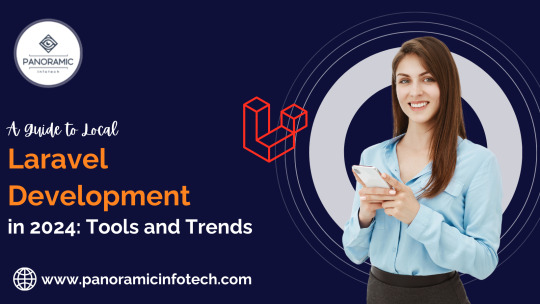
Local Laravel development forms the foundation for building robust web applications, and in 2024, the landscape is evolving with new tools and trends that streamline and enhance the development experience. This guide explores the latest advancements and equips you to set up a powerful local Laravel environment.
The Rise of Containerization with Laravel Sail
One of the most significant trends in Laravel development is the rise of containerization. Traditionally, setting up Laravel environments involved manually configuring dependencies and virtual machines. Laravel Sail, introduced in Laravel 8, simplifies this process by leveraging Docker containers. Sail provides a pre-configured development environment with essential dependencies like PHP, MySQL, and Node.js.
Key Benefits of Laravel Sail:
Reduced Setup Time: No more manual configuration; start with a single command.
Consistent Environment: Ensures every developer has the same setup regardless of their machine.
Improved Reproducibility: Facilitates easy sharing and replication of development environments.
Leveraging Testing Tools for a Robust Development Workflow
In 2024, a robust testing strategy remains crucial. Here are some key tools to integrate into your local Laravel development workflow:
PHPUnit: Laravel’s built-in testing framework for unit and integration tests.
Laravel Dusk: For browser automation and end-to-end testing of Laravel applications.
Debugging Tools: Laravel Telescope and Laravel Debugbar for debugging and monitoring applications.
Setting Up Your Development Environment
Setting up a robust local development environment is essential for efficient Laravel development. Here are some popular tools in 2024:
Laravel Valet: A lightweight development environment for macOS users, offering a seamless experience for running Laravel applications locally.
Homestead: A pre-packaged Vagrant box for Laravel development, suitable for developers using all major operating systems.
Docker: Containerization technology that enables developers to create consistent environments across development, testing, and production.
Version Control and Collaboration
Version control is fundamental for collaborative development:
Git: The most widely used version control system, essential for managing code changes and collaborating with teams.
GitHub, GitLab, Bitbucket: Platforms for hosting Git repositories and managing projects, offering features like issue tracking and pull requests.
Laravel Project Structure
Understanding the structure of a Laravel development project is crucial for organizing your codebase effectively:
app/: Contains the core code of the application, including models, controllers, and middleware.
config/: Configuration files for various services and components.
resources/: Contains assets such as views, language files, and front-end assets.
routes/: Contains route definitions for the application.
database/: Contains database migrations, seeders, and factories.
Dependency Management
Laravel projects use Composer for dependency management:
composer.json: Specifies the dependencies required by the
project.composer.lock: Lock file ensuring consistent dependency versions across installations.
Ready to Build Exceptional Laravel Applications?
Panoramic Infotech offers cutting-edge Laravel Development Services, leveraging the power of this popular PHP framework to create robust and scalable web applications. Contact Panoramic Infotech today to discuss your project and how we can help you leverage the power of Laravel for your business.
Let’s Build Together! Reach out to us at Contact Us to start your Laravel Development with Panoramic Infotech.
This guide equips you with the knowledge to set up a powerful local Laravel development environment in 2024. Remember, the best approach depends on your specific needs. Stay updated with the latest trends to streamline your development workflow and build exceptional Laravel applications.
#Laravel development company#Laravel we Laravel development services#b development company#laravel development#Laravel development solutions
0 notes
Text
Guide to Laravel Development(2024)

In the dynamic realm of development, Laravel stands out as an innovative and efficient tech-stack for web development. This guide explores Laravel’s evolution, features, and its impact on web development.
History of Laravel Framework: Launched in 2011 by Taylor Otwell, Laravel is a PHP-based, open-source web framework following the MVC architecture. Boasting a substantial user base, Laravel integrates front-end and back-end tools, offering a comprehensive development solution.
Top Features of Laravel Framework:
MVC Architectural Pattern: Laravel supports the MVC pattern, enhancing code organization for large projects.
Built-In Template Engine (Blade): Features Blade, a powerful template engine simplifying view creation in Laravel.
Security & Authentication: Prioritizes security with features like XSS protection and secure password hashing.
Symphony — Integrated Mail Services: Seamlessly integrates with SwiftMailer for efficient email management.
Customization Using Artisan Tool: Artisan automates tasks, simplifying code creation, database management, and more.
Eloquent ORM: Intuitive Object-Relational Mapping for developer-friendly database interactions.
Advantages and Disadvantages of Laravel:
Advantages: Large community, seamless exception handling, easy cache integration, automated unit testing, modular libraries, customizable routing, and excellent performance.
Disadvantages: Learning curve for beginners, potential performance overhead, reliance on Composer, extensive ecosystem, and regular updates may pose challenges.
Why Hire Laravel Developers: Hiring Laravel developers offers benefits such as rapid development, scalability, cost-effectiveness, a rich ecosystem, and easy maintenance. Key factors to consider include experience, technical skills, portfolio diversity, problem-solving ability, communication skills, testing expertise, and client reviews.
Conclusion: Laravel, with its continuous upgrades, remains a top choice for developing highly functional web applications. Its features make it appealing to mid-level and large businesses, positioning it as a leading PHP framework for web development. NITSAN is recommended for Laravel and PHP development services.
Read In details Blog at — https://nitsantech.com/blog/laravel-development-the-complete-guide
0 notes
Text
Elevating Web Development with a Leading Laravel Development Company in the USA
In the ever-evolving landscape of web development, staying ahead of the curve is imperative. As businesses strive to create robust and scalable web applications, the choice of a reliable and efficient framework becomes paramount. One such framework that has garnered widespread acclaim is Laravel. In this blog, we will delve into the world of Laravel website development and explore the advantages of partnering with a top-tier Laravel development company in USA.
Laravel: An Overview:
Laravel is an open-source PHP web application framework that has gained popularity for its elegant syntax, modular packaging system, and robust features. Developed by Taylor Otwell, Laravel has rapidly emerged as the framework of choice for developers seeking a clean and expressive syntax that facilitates rapid development.
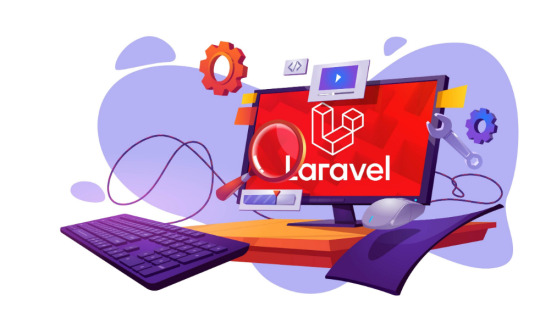
Key Features of Laravel:
Eloquent ORM (Object-Relational Mapping): Laravel's Eloquent ORM simplifies database interactions, allowing developers to work with databases using an intuitive syntax, thus boosting productivity.
Blade Templating Engine: Laravel's Blade templating engine enables the creation of dynamic and engaging views, making it easier to manage and organize the presentation layer of applications.
Artisan Console: The Artisan command-line tool automates various tasks, streamlining development processes and enhancing developer productivity.
Middleware: Laravel's middleware enables the filtering of HTTP requests entering your application, providing a customizable and powerful mechanism for managing HTTP traffic.
Laravel Mix: A powerful asset compilation tool that streamlines the process of managing and compiling CSS and JavaScript assets.
Advantages of Laravel Website Development:
Rapid Development: Laravel's elegant syntax and extensive set of tools enable developers to build web applications quickly, reducing time-to-market and giving businesses a competitive edge.
Modularity: Laravel's modular packaging system, known as Composer, allows developers to integrate third-party libraries seamlessly, enhancing the functionality and scalability of web applications.
Eloquent ORM: The use of Eloquent ORM simplifies database operations, making it easy to interact with databases and significantly reducing the amount of boilerplate code required for database-related tasks.
Community Support: Laravel boasts a robust and active community of developers who contribute to the framework's continuous improvement. This community support ensures that developers have access to a wealth of resources, tutorials, and solutions to common problems.
Security: Laravel prioritizes security, providing built-in features such as hashed password storage and protection against SQL injection, cross-site scripting (XSS), and cross-site request forgery (CSRF) attacks.
Choosing the Right Laravel Development Company in the USA:
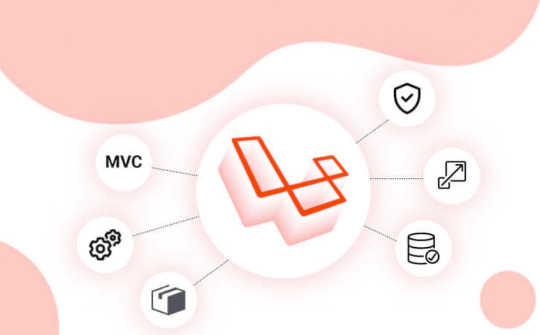
The success of a Laravel project often hinges on selecting the right development partner. When searching for a Laravel development company in USA, consider the following factors:
Experience and Expertise: Look for a company with a proven track record in Laravel development. An experienced team is better equipped to handle challenges and deliver high-quality solutions.
Portfolio: Review the company's portfolio to assess the diversity and complexity of projects they have undertaken. This will give you insights into their capabilities and the types of solutions they can deliver.
Client Testimonials: Explore client testimonials and case studies to gauge the satisfaction levels of previous clients. Positive feedback is a strong indicator of a reliable and trustworthy development partner.
Communication and Collaboration: Effective communication is crucial in any development project. Ensure that the company fosters open communication and collaboration, keeping you informed at every stage of the development process.
Scalability: Choose a Laravel development company that can scale with your project. This ensures that as your business grows, the development team can adapt and accommodate the evolving needs of your web application.
Conclusion:
Laravel has undoubtedly emerged as a game-changer in the world of web development, providing developers with a powerful and expressive framework to create innovative and feature-rich applications. When seeking a Laravel website development company in the USA, prioritize experience, expertise, and a proven track record to ensure the success of your web development project. By harnessing the capabilities of Laravel and partnering with a reliable development team, you can unlock the full potential of your web applications, driving business success in the digital age.
0 notes
Text
Building a Realtime Chat Bot With Laravel

In today's digital age, chatbots have revolutionized how businesses interact with customers and streamline their operations. This blog post will provide a concise overview of chatbots and emphasize their pivotal role in enhancing customer service and efficiency. Additionally, we'll explore the relevance of using Laravel, a popular PHP web application framework, in chatbot development. Lastly, we'll discuss the primary purpose of this blog post – guiding you on how to hire Laravel developers to build your chatbot solution.
Chatbots, also known as virtual assistants or conversational agents, are software programs designed to mimic human conversation. Their importance lies in their ability to provide instant, 24/7 assistance, significantly improving user experiences and streamlining various business processes.
It’s renowned for its developer-friendly features and versatility, and serves as an excellent choice for building chatbots. Its modular architecture, extensive libraries, and expressive syntax make it the perfect framework for creating intelligent and responsive chatbot applications.
Let's discuss how to hire Laravel developers for chatbot development. You'll clearly understand why chatbots are essential, how it can empower your chatbot project, and the steps to hire a proficient Laravel developer who can bring your chatbot vision to life. Whether you're looking to enhance customer service or automate tasks, hiring the right Laravel developer is the key to success.
Getting Started with Laravel Development
Before diving into the world of development, ensuring you have the proper prerequisites to set yourself up for success is essential. Let's provide you with a brief overview of the essentials:
1. Tools and Technologies:
Text Editor/IDE: Choose a text editor or integrated development environment (IDE) you're comfortable with, such as Visual Studio Code, PhpStorm, or Sublime Text.
Web Server: Laravel applications typically run on a web server. You can use Apache, Nginx, or its built-in development server for local testing.
Database: Laravel supports various databases, including MySQL, PostgreSQL, SQLite, and SQL Server. Set up and configure the database system you prefer.
2. Basic Knowledge:
Laravel Fundamentals: It's crucial to have a solid grasp of its core concepts, such as routing, controllers, models, views, migrations, and Eloquent ORM. Its official documentation is an excellent resource for learning these fundamentals.
PHP: Since Laravel is a PHP framework, a good understanding of PHP programming is essential. Familiarize yourself with PHP syntax, data types, functions, and object-oriented programming (OOP) principles.
With these prerequisites in place, you'll be well-prepared to embark on your Laravel development journey and create web applications that leverage the power and elegance of this popular PHP framework.
Setting Up Laravel
When it comes to providing top-notch Laravel development services, correctly setting up your development environment is the crucial first step. Let's walk through the essential tasks to get you up and running smoothly:
1. Installing Laravel:
To kickstart your development journey, you'll need to install Laravel globally on your system. You can do this using Composer, a dependency manager for PHP. Execute the subsequent command to install it:

This command ensures you have the Laravel command-line tool available, making it easy to create new Laravel projects.
2. Configuring the Environment:
It relies on a robust configuration system. Key settings, such as database connections, environment variables, and application-specific settings, are defined in the .env file. Configure this file with your specific environment details, like database credentials and app keys. Proper configuration is essential for the security and functionality of your Laravel application.
3. Setting Up the Database:
It supports multiple database systems, allowing you to choose the best fit for your project's needs. To configure your database connection, update the .env file with your database type, host, port, username, and password. Afterwards, run the following command to create the database tables:

This will ensure your database is ready to store data for your Laravel application.
By following these steps and setting up correctly, you're well on your way to providing exceptional Laravel development services. This foundation will empower you to create robust web applications and deliver high-quality solutions to your clients or users.
Building a ChatBot with Expertise
Having a well-structured plan is vital when you're on a mission to create a cutting-edge chatbot. Here's a step-by-step guide to help you navigate the development process, ensuring your chatbot operates flawlessly:
A. Designing the Chat Bot's Architecture:
Start by carefully crafting the architecture of your chatbot. Define its components, such as the messaging engine, database structure, and user management system. A well-thought-out architecture sets the stage for a robust and scalable chatbot.
B. Implementing User Authentication:
Security is paramount. Implement user authentication to safeguard user data and control access to your chatbot. Laravel development agency, with its built-in authentication system, can simplify this process for you.
C. Building the Chat Interface:
Create an engaging and user-friendly chat interface. Design matters here, as it directly impacts user interaction and satisfaction.
D. Integrating a Real-time Messaging System:
To achieve seamless, real-time communication, integrate a messaging system. You can leverage technologies like WebSockets to enable instant message delivery and updates.
E. Handling User Messages and Responses:
Developing mechanisms to handle user messages and responses efficiently involves processing and storing messages, ensuring they reach the intended recipients, and managing message history.
F. Implementing Chat Bot Logic:
The heart of your chatbot lies in its logic. Define how your chatbot understands and generates responses. Incorporate natural language processing (NLP) and machine learning (ML) algorithms for intelligent interactions.
As you embark on this exciting journey, consider enlisting the expertise of a Laravel development agency. Their experience with its capabilities can supercharge your chatbot development, ensuring it's functional, scalable, and maintainable. Together, you can create a chatbot that stands out in the ever-evolving digital communication landscape.
Testing Your Laravel Chat Bot for Optimal Performance
As you tread the path of Laravel development in building your chatbot, testing is a crucial phase that should never be overlooked. Let's explore the significance of testing and understand the different testing approaches:
A. Discussing the Importance of Testing:
Testing is the cornerstone of delivering a reliable and efficient chatbot. It ensures that your application functions as intended, providing a seamless experience to users. Testing also helps identify and rectify issues before they reach your audience, saving time and maintaining your chatbot's reputation.
B. Explaining Unit Tests and Integration Tests:
In Laravel development, testing involves two primary types: unit tests and integration tests.
Unit Tests: These focus on individual components or functions of your chatbot in isolation. They validate that each part of your codebase works correctly.
Integration Tests: These come into play when examining how different components interact. Integration tests verify that your chat bot's modules integrate smoothly and harmoniously.
C. Providing Code Examples for Testing the Chat Bot:
Let's dive into some code examples to illustrate the testing process in Laravel. Here's a basic example of a unit test for a chatbot controller:
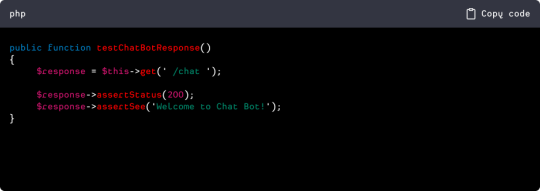
In this example, we're testing if the chatbot responds as expected when a user accesses the chat page.
By conducting comprehensive testing throughout your Laravel chatbot development, you ensure higher reliability and performance. It's a critical step in delivering a polished and user-friendly chatbot that meets the expectations of your audience.
Efficient Deployment for Your Chat Bot: A Laravel Development Company's Approach
The deployment phase takes center stage once your chatbot is ready to shine. It's time to prepare your application for production and make it accessible to users worldwide. Here's a concise guide on how to navigate this crucial phase:
Preparing the Application for Production:
Before deploying your chatbot, it's essential to ensure that your application is production-ready, optimizing performance, enhancing security measures, and fine-tuning configurations to handle real-world traffic efficiently. It's a step where the expertise of a Laravel development company can be invaluable, ensuring your application is primed for success.
Choosing a Hosting Platform:
Selecting the right hosting platform is a pivotal decision in the deployment process. Your choice should align with your chatbot's requirements, including scalability, uptime, and budget considerations. Popular options for Laravel applications include shared hosting, Virtual Private Servers (VPS), cloud platforms like AWS or Azure, and dedicated hosting. Each has its merits, and the ideal choice depends on your needs.
Deploying the Chat Bot on a Server:
Once you've picked your hosting platform, it's time to deploy your Laravel chatbot to a server. The deployment process typically involves uploading your codebase, configuring server settings, and setting up a database. Its documentation provides detailed guidance on deploying applications, ensuring a smooth transition from development to a live, accessible chatbot.
A Laravel development company can play a pivotal role in this deployment journey, leveraging its expertise to make the process seamless and efficient. Their experience ensures that your chatbot goes live with minimal hiccups, delivering a reliable and performant solution to your users.
Efficient Scaling and Maintenance for Your Chat Bot
Scaling and maintenance are pivotal aspects of ensuring your chatbot's continued success. Here's a comprehensive look at strategies to scale and maintain your chatbot effectively:
Strategies for Scaling the Chat Bot:
As your chatbot gains popularity and user engagement grows, it's crucial to have a scalable strategy.
Load Balancing: Implement load balancing to distribute incoming traffic evenly across multiple servers, ensuring your chatbot remains responsive even during peak usage.
Auto-scaling: Leverage cloud hosting platforms that offer auto-scaling capabilities. Your infrastructure can automatically adjust to handle increased traffic, providing a seamless user experience.
Regular Maintenance and Updates:
Regular maintenance is essential to keep your chatbot running smoothly and securely.
Software Updates: Keep your Laravel framework and other dependencies up to date, including security patches and feature enhancements.
Database Optimization: Periodically optimize your database to improve query performance and reduce response times.
Bug Fixes: Address and fix any bugs or issues users report promptly.
Handling User Feedback and Improving the Chat Bot:
User feedback is invaluable for enhancing your chatbot's functionality and user experience.
Feedback Channels: Establish clear channels for users to provide feedback, such as in-app forms or contact information.
Feedback Analysis: Regularly analyze user feedback to identify common issues, pain points, or feature requests.
Iterative Development: Use feedback to inform iterative development cycles. Continuously enhance your chatbot based on user input, ensuring it evolves to meet changing needs.
By implementing these strategies, you can ensure that your chatbot scales gracefully to accommodate growing user bases and maintains its reliability and relevance over time. This proactive approach fosters a positive user experience and establishes your chatbot as a trusted and valuable resource.
Conclusion
In this journey through chatbot development, we've explored various aspects crucial to creating successful and impactful chatbots. From understanding the importance of chatbots in enhancing user experiences to harnessing the power of Laravel development, we've covered a spectrum of insights.
We've delved into setting up the foundation, testing for reliability, and deploying your chatbot for the world to experience. Scaling and maintaining your chatbot have also been discussed as vital steps to ensure its long-term success.
We encourage you to delve deeper into chatbot development as we wrap up. The world of conversational AI is ever-evolving, offering exciting opportunities to create solutions that streamline processes and connect with users in new and innovative ways.
We sincerely thank you for your time and interest in this blog post. Your curiosity and passion for technology drive the industry forward, and we hope this information has been valuable in your quest to explore the fascinating world of chatbot development. Stay curious, keep learning, and continue to create solutions that make a difference!
Source: https://www.addwebsolution.com/blog/building-realtime-chat-bot-laravel
#laravel development company#laravel development services#hire laravel developer#laravel app development company#certified laravel developer
0 notes
Text
Upload Laravel 10 ke 000webhost
Berikut adalah langkah-langkah untuk meng-upload aplikasi Laravel 10 ke 000webhost: Persiapan Pastikan Aplikasi Laravel Sudah Siap: Pastikan aplikasi Laravel kamu sudah berjalan dengan baik di lingkungan lokal. Instalasi Composer: Jalankan composer install --optimize-autoloader --no-dev untuk menginstal dependensi tanpa package development. Generate Key: Pastikan kamu sudah mengenerate…
View On WordPress
0 notes
Text
Why Use Laravel Framework for Web Development?
The world of web development is in a constant state of flux. To remain competitive in this dynamic landscape, businesses must prioritize customer satisfaction and deliver exceptional service. Elevating customer experiences through web development is the key to boosting revenue, and among the plethora of available frameworks, Laravel stands out as an ideal choice.
In the realm of web development, choosing the right framework can be pivotal to your project's success. Among the contenders, Laravel has emerged as a favorite among developers and businesses alike. Its reputation isn't just built on hype; there are concrete reasons why Laravel is celebrated.
The Power of Laravel Framework
Laravel, an open-source framework, has garnered immense popularity due to its ability to transform ordinary websites into engaging platforms that offer unparalleled user experiences. It goes beyond aesthetics, diving deep into the technical aspects to create a seamless and efficient development process.
Streamlined Development Process
Laravel's structured approach to development significantly speeds up the process. It provides a solid foundation and a wide array of pre-built tools that enable developers to focus on the unique features of the project rather than reinventing the wheel.
Secure Authentication In the digital age, security is paramount. Laravel eases the implementation of secure authentication mechanisms, ensuring that user data remains protected. This feature alone has contributed to Laravel's reputation as a reliable framework.

Robust Technical Security
Technical security is a critical consideration when building web applications. Laravel shines in this regard by offering features that safeguard against common vulnerabilities, giving both developers and users peace of mind.
Third-Party Integration
Modern web applications often rely on third-party services. Laravel's integration capabilities facilitate the seamless inclusion of external tools, expanding the functionality and enhancing the overall user experience.
Key Features of Laravel Framework
Dependency Management
Laravel's dependency management system, facilitated by the service container and inversion of control (IoC), simplifies class dependencies. This translates to cleaner, more modular code that is easier to maintain and extend.
Integrated Authentication
Authentication is a breeze with Laravel's integrated system. Developers can swiftly implement secure user authentication, saving time and ensuring standardized security practices.
Migration System
Laravel's migration system streamlines database structure management. Developers can create, modify, and update databases and tables without resorting to raw SQL queries, enhancing maintainability.
Blade Templating Engine
The Blade templating engine simplifies view creation. Its intuitive syntax and powerful features allow developers to create dynamic, aesthetically pleasing user interfaces.
Artisan Console
The Artisan console empowers developers by automating repetitive tasks, resulting in higher productivity and cleaner code. Custom commands can be added to Artisan to extend its functionality.
Eloquent ORM
Laravel's Eloquent ORM provides an elegant way to interact with databases. Its expressive syntax simplifies database manipulation and relationship management.
MVC Architecture in Laravel
Laravel's adherence to the MVC (Model-View-Controller) architecture promotes separation of concerns, leading to better organization, scalability, and maintainability of applications.
Community-Wide and Open Source
The robust Laravel community contributes to its growth and evolution. Its open-source nature encourages collaboration and ensures continuous improvement.
In-Built Libraries
Laravel comes equipped with a variety of libraries, reducing the need for external dependencies. This results in more efficient development and fewer integration challenges.
Composers
Laravel's integration with Composer, a dependency management tool, enhances efficiency. It allows developers to manage packages seamlessly, saving time and effort.

Simplified Coding
The Laravel blade template engine facilitates clean and concise coding, promoting adherence to best practices and enhancing maintainability.
Top Benefits of Laravel Framework for Web Development
Quick and Straightforward to Use
Laravel's built-in templates expedite development, enabling developers to create functional websites rapidly. This efficiency translates to reduced costs and faster time-to-market.
Laravel Has Great Security Features
Laravel prioritizes security, incorporating features such as password hashing and secure cookie handling. This ensures user data remains safeguarded from potential threats.
Scalable and Easy-To-Deploy Solution
Laravel's integrations and ecosystem support scalability and deployment. As your business grows, Laravel adapts, ensuring your technology evolves seamlessly.
Future-Ready Applications
Laravel's adaptability allows developers to create applications prepared for future changes. This future-proofing minimizes disruptions and optimizes long-term maintenance.
High Priority on Security
Laravel addresses security comprehensively, covering areas like authentication, data encryption, and route protection. This commitment to security aligns with contemporary web app security needs.
Conclusion
In the realm of web development, the Laravel framework stands out as a formidable choice. Its comprehensive feature set, developer-friendly tools, and commitment to security and scalability make it a favorite among developers and businesses seeking to create exceptional online experiences.
youtube
#mobile app development#webdevelopmentcompany#web developers#webdesign#webdevelopment#mobile application development#mobile app developer company#mobileappdevelopment#mobile app developers#userexperience#softwaredevelopment#businessgrowth#appdevelopment#Youtube
1 note
·
View note
Text
Cómo crear una aplicación de mensajería con Laravel y Vue
En este tutorial voy a explicar cómo crear una aplicación de mensajería con Laravel y Vue. El objetivo del tutorial consiste en comprender y aprender a utilizar componentes de Vue en el contexto de Laravel. Por este motivo, no usaremos Inertia, aunque a priori pueda parecer la opción más sencilla. Introducción Para seguir tutorial debes tener tanto PHP como composer instalado en tu sistema, así…
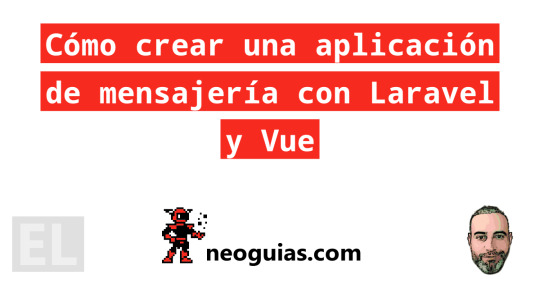
View On WordPress
0 notes
Text
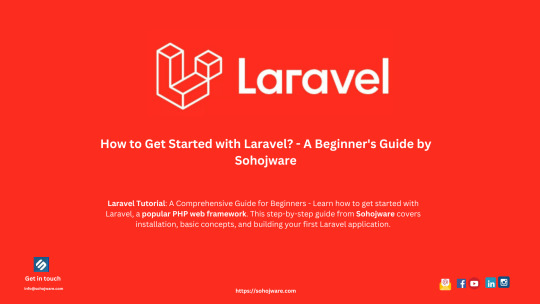
How To Get Started With Laravel? — A Beginner’s Guide By Sohojware
Laravel, a free, open-source PHP web framework, has become popular worldwide for web developers. Laravel streamlines development by providing a robust foundation for building modern web applications. This comprehensive guide from Sohojware, a leading US-based software development company, will equip you with the essential knowledge to embark on your Laravel development journey.
Why Choose Laravel?
There are many reasons why Laravel stands out in the world of web frameworks. Here are a few key benefits:
Elegant MVC Architecture: Laravel enforces the Model-View-Controller (MVC) design pattern, promoting clean code separation and maintainability. This structure makes your code easier to understand, test, and scale as your application grows.
Object-Oriented Approach: Built on top of PHP’s object-oriented capabilities, Laravel fosters code reusability and promotes a well-organized development workflow.
Built-in Features: Laravel comes packed with a plethora of pre-built functionalities, including authentication, authorization, routing, caching, database management, and more. This saves you time and effort by eliminating the need to develop these features from scratch.
Artisan CLI Tool: Laravel’s powerful command-line interface (CLI) tool, Artisan, simplifies common development tasks like generating models, migrations, controllers, and other boilerplate code. This speeds up development significantly.
Active Community and Ecosystem: Laravel boasts a large and active community of developers who contribute to its continuous improvement. This ensures access to extensive documentation, tutorials, and readily available packages for various functionalities.
Getting Started with Laravel
Now that you’re convinced about the advantages of Laravel, let’s delve into the steps to get you started:
1. Prerequisites:
Before diving into Laravel development, ensure you have the following tools installed on your system:
PHP (version 7.4 or later): Download and install the latest version of PHP from the official website (https://www.php.net/downloads/).
Composer: Composer is a dependency manager for PHP. Follow the installation instructions on the Composer website (https://getcomposer.org/).
2. Install Laravel:
There are two primary methods for installing Laravel:
Method 1: Using Composer:
Open your terminal and navigate to your desired project directory. Then, run the following command:
Bash

Replace “your-project-name” with your preferred application name. This command will create a new Laravel project directory with all its dependencies installed.
Method 2: Using Laravel Installer:
If you don’t have Composer installed, you can download the Laravel installer from the official website ([invalid URL removed]). Once downloaded, execute the following command in your terminal:
Bash

3. Set Up Database:
Laravel utilizes a database to store application data. You can choose from various database management systems like MySQL, PostgreSQL, or SQLite. Configure your database credentials in the .env file located at the root of your project directory.
4. Start the Development Server:
Laravel provides a built-in development server to run your application locally. Navigate to your project directory in the terminal and execute the following command to start the server:
Bash
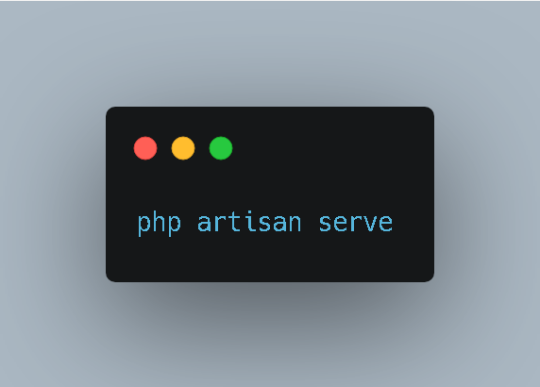
This will typically launch your application at http://localhost:8000 in your web browser.
5. Explore the Project Structure:
Laravel adheres to a well-defined directory structure, making locating and managing different application components easy. Take some time to familiarize yourself with the key directories like app, config, public, resources, and routes, each serving specific functionalities.
Building Your First Laravel Application
Now that you have a basic Laravel setup, let’s create a simple application to demonstrate its functionalities. We’ll build a basic blog system where users can view a list of posts.
1. Create a Model:
A model represents the data structure of your application. To create a model for posts, run the following Artisan command in your terminal:
Bash
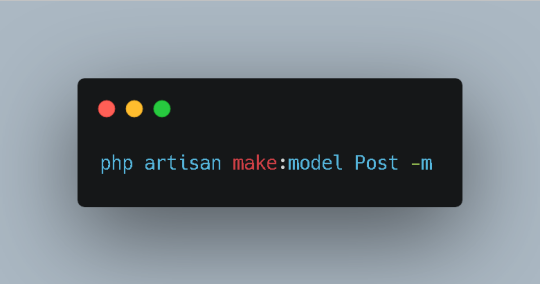
This command generates a Post.php file within the app directory. Modify this file to define the attributes associated with a post, such as title, content, and author.
2. Create a Migration:
A migration is a version control system for your database. It allows you to define changes to your database schema and easily roll them back if necessary. To create a migration for the Post model, run the following Artisan command:
Bash
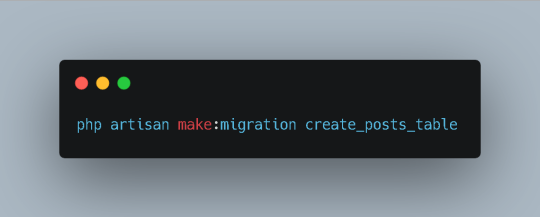
This will generate a new migration file within the database/migrations directory. Open the file and add the necessary columns to the up method. For example:
PhP
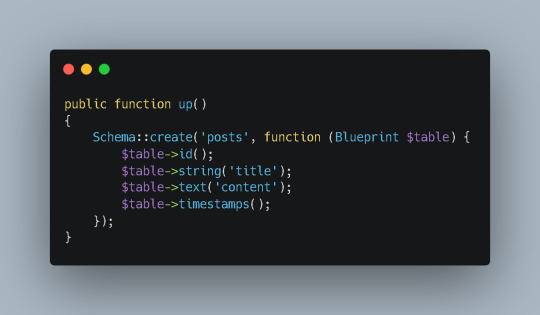
3. Run the Migration:
To apply the changes defined in the migration to your database, run the following command:
Bash
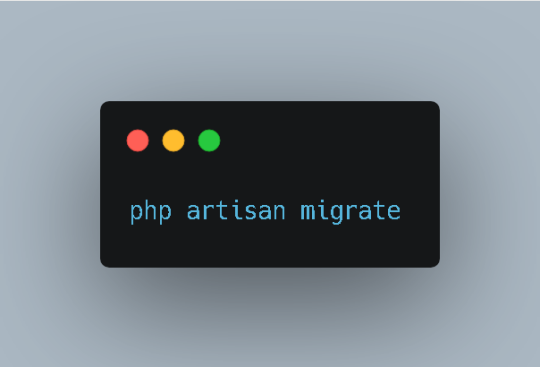
This will create the posts table in your database.
4. Create a Controller:
A controller handles user requests and interacts with your models. To create a controller for managing posts, run the following Artisan command:
Bash

This will generate a PostController.php file within the app/Http/Controllers directory. Inside the controller, define methods to handle different actions, such as displaying a list of posts, creating a new post, and editing or deleting existing posts.
5. Define Routes:
Routes map URLs to specific controller actions. To define routes for your blog application, open the routes/web.php file and add the following code:
Php

This route will map the root URL (http://localhost:8000) to the index method of the PostController class.
6. Create a View:
Views are responsible for rendering HTML content. To create a view for displaying the list of posts, run the following Artisan command:
Bash
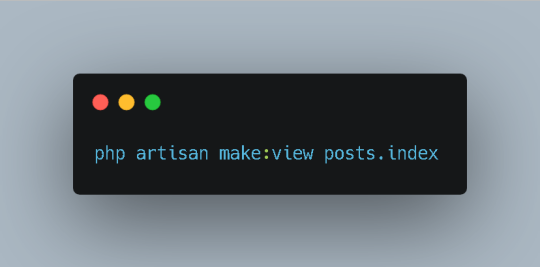
This will generate a posts/index.blade.php file within the resources/views directory. Inside the view, write the HTML code to display the list of posts.
7. Complete the Controller:
In the index method of the PostController, retrieve the list of posts from the database using the Post model and pass it to the view:
PhP

8. Test Your Application:
Access http://localhost:8000 in your web browser to see the list of posts displayed on the page.
Conclusion
This guide has provided you with a solid foundation for getting started with Laravel. By following these steps and exploring the framework’s rich features, you can efficiently build robust and scalable web applications. Remember, practice is key to mastering Laravel. Start experimenting with different features and building your own projects to enhance your skills.
FAQs
What is the difference between Laravel and CodeIgniter?
Laravel and CodeIgniter are both popular PHP frameworks, but they have distinct approaches and features. Laravel emphasizes convention over configuration and provides a more expressive syntax, while CodeIgniter offers a more lightweight and flexible structure. The choice between the two often depends on project requirements and developer preferences.
Can I use Laravel for large-scale applications?
Absolutely! Laravel is designed to handle complex and high-traffic applications. Its robust architecture, scalability features, and active community support make it a suitable choice for enterprise-level projects.
How does Laravel compare to other popular frameworks like Symfony and Yii?
Laravel, Symfony, and Yii are all powerful PHP frameworks with their own strengths and weaknesses. Laravel is known for its ease of use and expressive syntax, Symfony offers a more modular and customizable approach, and Yii emphasizes performance and efficiency. The best framework for your project depends on your specific needs and preferences.
Does Sohojware offer Laravel development services?
Yes, Sohojware provides professional Laravel development services. Our team of experienced developers can help you build custom Laravel applications tailored to your business requirements.
How can I learn Laravel more effectively?
The best way to learn Laravel is through hands-on practice and experimentation. Start by following tutorials and building small projects. As you gain confidence, gradually tackle more complex applications. Additionally, consider joining online communities and forums where you can connect with other Laravel developers and seek help when needed.
1 note
·
View note
Text
Laravel vs CodeIgniter: Which PHP Framework Is Better?
A PHP framework is a collection of pre-written code libraries, tools, and components that provide a structured and standardized way to build web applications in PHP. It aims to simplify and streamline the development process by offering reusable code, ready-made functions, and established architectural patterns. Frameworks provide a foundation for developers to create web applications more efficiently, as they eliminate the need to write common code from scratch. They typically follow a specific architectural pattern, such as Model-View-Controller (MVC), which helps organize the application's code and separates concerns. Laravel Laravel is a powerful and widely adopted PHP framework that prioritizes simplicity, elegance, and modern web application development. Created by Taylor Otwell, Laravel has gained immense popularity in the PHP community due to its extensive feature set, robust ecosystem, and developer-friendly syntax. Let's delve into the details of what makes Laravel special and its advantages for web development: Elegant Syntax and MVC Architecture: Laravel follows the Model-View-Controller (MVC) architectural pattern, which separates the application's logic into three distinct layers. This approach enhances code organization, maintainability, and scalability. Laravel's syntax is expressive and readable, making it a joy to work with and reducing the time required to write and understand code. Rich Ecosystem and Package Manager: Laravel boasts a vibrant ecosystem with a vast collection of pre-built packages, known as "Laravel Packages" or "Laravel Extensions." These packages offer ready-made solutions for common tasks such as user authentication, database management, payment integration, and more. Laravel utilizes Composer, a dependency management tool, making it easy to install, manage, and update packages within your project. Blade Templating Engine: Laravel incorporates the Blade templating engine, which provides a clean and efficient way to separate presentation logic from application logic. Blade templates offer features like template inheritance, control structures, and reusable components (partials). The templating engine significantly simplifies the process of creating dynamic and reusable views for your web application. Database Migration and Query Builder: Laravel includes a powerful database migration system that enables developers to version control and manage database schema changes over time. Migrations allow for seamless collaboration within development teams and provide a consistent and reliable approach to database updates. Additionally, Laravel's query builder offers a convenient and expressive way to interact with databases, reducing the need for writing raw SQL queries. Object-Relational Mapping (ORM) with Eloquent: Laravel provides an intuitive and robust Object-Relational Mapping (ORM) tool called Eloquent. Eloquent simplifies database operations by allowing developers to interact with databases using PHP syntax instead of writing complex SQL queries manually. Eloquent expressive syntax and query builder make tasks such as database querying, relationships, and data manipulation seamless and efficient. Authentication and Authorization: Laravel includes a comprehensive and secure authentication system out of the box. It provides pre-built controllers, views, and middleware for user registration, login, and password reset functionality. Laravel also offers fine-grained access control through its authorization mechanisms, allowing you to define roles and permissions for different users and manage access to various parts of your application. Caching and Performance Optimization: Laravel offers support for various caching systems, including popular options like Redis and Memcached. By leveraging caching, you can dramatically improve your application's performance by reducing database queries and expensive computations. Laravel's caching features make it easy to implement caching strategies, speeding up your application and enhancing user experience. Testing and Debugging: Laravel comes with a robust testing suite that facilitates unit testing, integration testing, and application-level testing. The framework integrates with PHP Unit, providing the tools and features necessary for writing comprehensive test cases and ensuring the stability and reliability of your codebase. Laravel also provides powerful debugging and error handling capabilities, making it easier to identify and resolve issues during development. Community and Documentation: Laravel has a large and active community of developers who contribute to its growth and provide support through forums, tutorials, packages, and resources. The official documentation of Laravel is extensive, well-structured, and continuously updated, making it a valuable resource for both beginners and experienced developers. CodeIgniter CodeIgniter is a powerful and lightweight PHP framework designed for rapid web application development. It has been around for over a decade and has gained popularity among developers due to its simplicity, speed, and small footprint. CodeIgniter follows the Model-View-Controller (MVC) architectural pattern, providing a structured approach to building web applications. Let's dive into the details of CodeIgniter and its advantages: Lightweight and Fast: CodeIgniter prides itself on its lightweight nature, making it an excellent choice for projects that require high performance and minimal resource usage. It has a small footprint, allowing applications built with CodeIgniter to load quickly and respond swiftly to user interactions. Easy to Learn and Use: One of the standout features of CodeIgniter is its simplicity, making it easy to learn and use for developers of varying skill levels. Its straightforward documentation and intuitive syntax help developers grasp the framework quickly. CodeIgniter adopts a convention-over-configuration approach, reducing the need for extensive configuration files and allowing developers to get started with coding right away. Excellent Documentation and Community Support: CodeIgniter boasts comprehensive and well-maintained documentation that covers all aspects of the framework. The documentation provides clear explanations, code examples, and tutorials, making it easier for developers to learn and understand the framework. Additionally, CodeIgniter has an active and supportive community that offers forums, discussion boards, and third-party libraries, providing valuable assistance and resources to developers. Flexible Structure: CodeIgniter offers flexibility in terms of project structure, allowing developers to adapt the framework to their preferred coding style and project requirements. Unlike some other frameworks that enforce rigid directory structures, CodeIgniter gives developers the freedom to organize their code according to their needs. This flexibility makes CodeIgniter suitable for both small and large-scale applications. Speed and Performance: Due to its lightweight design and optimised codebase, CodeIgniter delivers impressive performance and faster execution times compared to more heavyweight frameworks. It minimizes server load and response time, ensuring a smooth user experience for applications built with CodeIgniter. Database Support and Query Builder: CodeIgniter provides a straightforward database abstraction layer that simplifies database interactions. It supports multiple database systems, including MySQL, PostgreSQL, Oracle, and more. The framework's built-in Query Builder class enables developers to construct database queries in a more readable and secure manner, preventing common SQL injection vulnerabilities. Security Features: CodeIgniter incorporates several security features to protect applications from common web vulnerabilities. It provides built-in protection against CSRF (Cross-Site Request Forgery) attacks, XSS (Cross-Site Scripting) attacks, and SQL injection. Additionally, CodeIgniter facilitates input validation and output escaping to prevent malicious data from compromising the application's security. Compatibility and Versatility: CodeIgniter is highly compatible with different PHP versions, making it suitable for a wide range of hosting environments. It also supports various operating systems, including Windows, Linux, and macOS. CodeIgniter's versatility allows developers to leverage its features for diverse projects, from simple websites to complex web applications. In summary, CodeIgniter stands out as a lightweight, user-friendly PHP framework that prioritizes simplicity, speed, and flexibility. Its advantages include a small footprint, fast performance, easy learning curve, extensive documentation, strong community support, database abstraction, and security features. These factors make CodeIgniter an appealing choice for developers looking for a powerful yet straightforward framework to build efficient web applications. Conclusion- When it comes to choosing between Laravel and CodeIgniter, it ultimately depends on the specific requirements of your project and your personal preferences as a developer. Both Laravel and CodeIgniter are popular PHP frameworks, each with its own strengths and advantages. Let's summaries the key points discussed throughout this blog: Laravel shines with its elegant syntax, extensive ecosystem, and robust features. It is well-suited for large-scale applications that require scalability, and its expressive syntax and MVC architecture contribute to faster development. Laravel's ORM tool, Eloquent, and its database migration system provide convenient database management options. The Laravel community is vibrant, offering an array of packages, resources, and support. On the other hand, CodeIgniter stands out for its simplicity, lightweight nature, and excellent performance. It is ideal for smaller projects that prioritize speed and minimal resource usage. CodeIgniter's easy learning curve, flexibility in project structure, and clear documentation make it accessible to developers of varying skill levels. Its compatibility with different PHP versions and support for various operating systems enhance its versatility. Ultimately, the choice between Laravel and CodeIgniter depends on factors such as project size, scalability requirements, development speed, and personal familiarity with the frameworks. Laravel's extensive ecosystem and powerful features make it a solid choice for complex and scalable applications. CodeIgniter's lightweight design, speed, and simplicity make it well-suited for smaller projects with performance considerations. Consider your project's specific needs, evaluate the strengths of each framework, explore their documentation and communities, and weigh them against your own expertise and preferences. Both Laravel and CodeIgniter have proven track records, strong developer communities, and valuable resources, ensuring that you can build successful PHP applications with either framework. Read the full article
0 notes